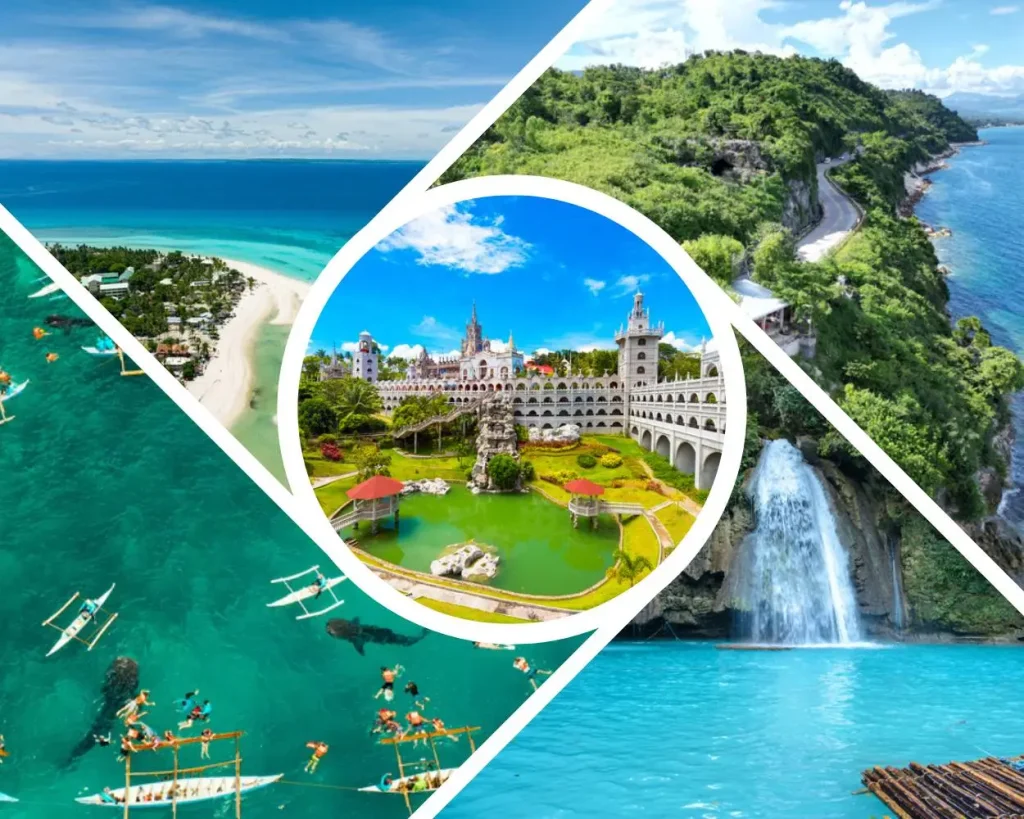Imagine swimming alongside the gentle giants of the ocean—whale sharks, the largest fish in the world. Oslob, a quaint coastal town in Cebu, Philippines, offers this once-in-a-lifetime experience. But what makes this adventure so special, and what should you know before diving in? In this guide, we’ll explore everything about whale shark watching in Oslob, from how to get there to the ethical considerations surrounding this popular activity. Whether you’re a thrill-seeker or a nature lover, this is your go-to resource for planning an unforgettable trip.
Why Oslob is Famous for Whale Sharks
Oslob, located in the southern part of Cebu, has gained global fame for its unique whale shark interaction. Locally known as “butanding” or “tuki”, these majestic creatures draw thousands of tourists annually to Barangay Tan-awan, just 10 kilometers from the town center. What sets Oslob apart? Unlike other whale shark hotspots where sightings depend on migration patterns, Oslob guarantees a 99% chance of seeing these giants year-round, thanks to local fishermen who feed them small shrimp near the shore.
This practice began in 2011 when fishermen noticed whale sharks lingering for food. Word spread fast, and by late 2011, Oslob transformed into a bustling tourism hub. Today, it’s one of Cebu’s top attractions, offering visitors a chance to snorkel or dive with these awe-inspiring animals in shallow waters.
How to Experience Whale Shark Watching in Oslob
Ready to dive into this adventure? Here’s what you need to know to make the most of your whale shark watching experience in Oslob.
Getting There
Oslob is about 120 kilometers from Cebu City, a 3-4 hour journey depending on traffic. Here are your travel options:
- By Bus: Head to Cebu South Bus Terminal near Elizabeth Mall and hop on a Ceres bus bound for “Bato via Oslob.” The fare is around ₱200-250 (~$4-5 USD). Tell the driver to drop you off at the whale shark watching site in Tan-awan.
- By Car: Rent a car and use Waze or Google Maps to navigate to “Oslob Whale Shark Watching.” The drive offers scenic views of Cebu’s coastline.
- By Tour: For a hassle-free trip, book a package with a travel agency like SquadPH Tours, which includes transport and guided activities.
Timing Your Visit
The whale shark watching season runs year-round, but the best months are November to May, aligning with Cebu’s dry season. Aim to arrive early—between 6 AM and 8 AM—when the sharks are most active and crowds are thinner. The activity operates daily from 6 AM to 12 PM (except Good Friday), with registration closing at 11 AM.
Fees and What’s Included
Costs vary depending on your experience level:
- Watching from the boat: ₱300 for locals, ₱500 for foreigners (~$6-10 USD)
- Snorkeling: ₱500 for locals, ₱1,000 for foreigners (~$10-20 USD)
- Scuba Diving: ₱1,500 (~$30 USD)
These fees include a life vest, snorkeling gear (if applicable), and a 30-minute boat ride. You can rent underwater cameras for ₱500 to capture the magic.
What to Expect During Your Whale Shark Encounter
Before you hit the water, you’ll attend a short orientation at the Briefing Center. Guides explain the strict rules to protect the whale sharks, such as no touching, no flash photography, and maintaining a 5-meter distance from their heads (6 meters from tails). Then, you’ll board a paddle boat—no motors allowed—to keep the environment undisturbed.
Once in the water, you’ll witness these gentle giants gliding effortlessly, mouths open to filter-feed on shrimp provided by the boatmen. The experience lasts 30 minutes, but it’s enough to leave you in awe of their size—some reach up to 20 feet in Oslob’s shallow waters!
The Ethical Debate: Is It Sustainable?
While whale shark watching in Oslob is undeniably thrilling, it’s not without controversy. Environmentalists argue that feeding alters the sharks’ natural migration and diet, potentially making them dependent on humans. Organizations like LAMAVE and Greenpeace highlight risks like boat injuries and stress from overcrowding, despite regulations.
On the flip side, supporters note that this tourism has boosted Oslob’s economy, providing jobs for locals who once relied on fishing. Marine biologists monitor the activity, and the sharks remain wild, free to come and go. Unlike captive settings, Oslob offers an open-water experience—albeit a curated one.
For a more natural alternative, consider Donsol, Sorsogon, where whale sharks are observed without feeding during their migration season (December to May). However, sightings there aren’t guaranteed, unlike Oslob’s near-certain encounters.
Tips for a Responsible Visit
To enjoy this adventure while minimizing impact, follow these tips:
- Book Early: Arrive at 5 AM to beat the crowds, especially during peak seasons like Chinese New Year or Holy Week.
- Pack Smart: Bring a swimsuit, towel, reef-safe sunscreen, and a waterproof camera or phone case.
- Respect the Rules: Stick to the guidelines—no touching or chasing the sharks—to ensure their well-being.
- Stay Local: Spend the night in Oslob at a guesthouse or resort to explore nearby attractions like Tumalog Falls or Sumilon Island.
Beyond Whale Sharks: Exploring Oslob
Oslob offers more than just whale sharks. After your swim, check out these gems:
- Tumalog Falls: A stunning waterfall perfect for a refreshing dip.
- Sumilon Island: Ideal for snorkeling and beach lounging.
- Oslob Heritage Park: A glimpse into the town’s colonial past.
Pair your trip with canyoneering in Badian or diving in Moalboal for a full Cebu adventure.
Final Thoughts on Whale Shark Watching in Oslob
Whale shark watching in Oslob is a bucket-list experience that blends awe with responsibility. It’s a chance to connect with nature’s wonders while supporting a local community—if done thoughtfully. By understanding the logistics, respecting the rules, and weighing the ethical aspects, you can make your visit both memorable and meaningful. So, are you ready to swim with the giants? Plan your trip today and dive into an adventure you’ll never forget!


